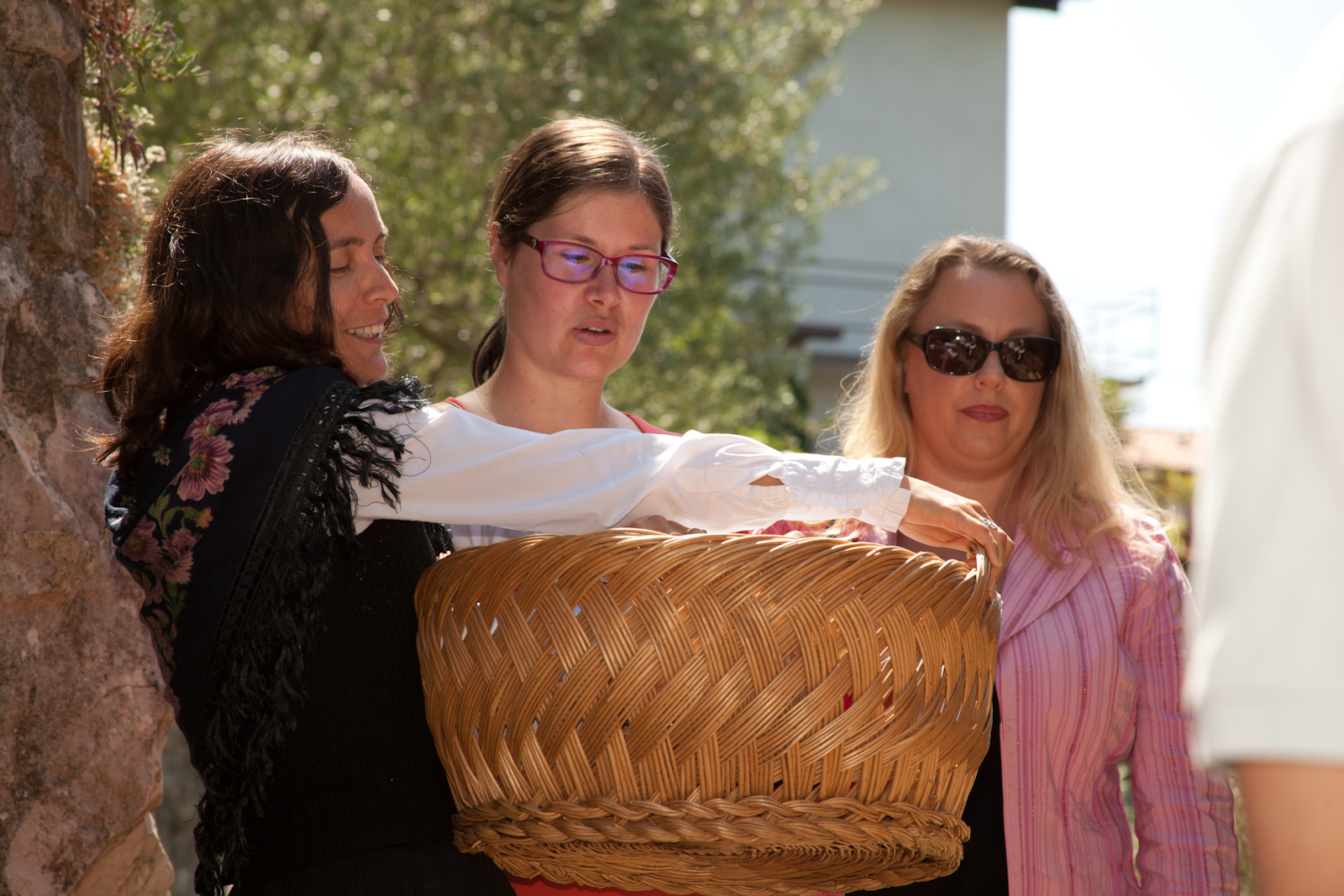Let’s go to a šagra!

A šagra is a typical Istrian village festival, traditionally dedicated to the celebration of the name day of the local patron saint. In the past, a šagra was sometimes accompanied by the celebration of another church holiday, most often a parish holiday known in Slovenian as “opasilo”, which is a celebration of the anniversary of the blessing of the church. The “opasilo” would begin with a ritual that was held in the church and would be followed by a festive lunch. In the afternoon and in the evening, there would usually be a party with outdoor dancing (except in the winter), band music, games and other events. In short, a šagra is a festival thrown in honour of the patron saint of a village.
Gabrijel Križman, the man responsible for designing experiences at IstraTerra, told us a little bit about the subject: “Šagras are part of our local cultural heritage and an element of Istrian stories, which makes them an indispensable ingredient for the creation of genuine Istrian experiences, which we use to introduce Istria to our clients.” If you want to experience a šagra, you will first have to clear your schedule, because every šagra is tied to a specific date and šagras only take place on the weekend.
According to oral accounts, the villages of Čežarji and Pobegi held four šagras each year: one in May, one in July, one in August and one in October. The Majenca (a šagra held in May) was celebrated on the first Sunday in May and coincided with cherry trees bearing their first fruit of the year. The Lujenca (a šagra held in July) related to the first “lujensko” vino or July wine. The Avgoštonca (a šagra held in August) was a celebration of the patron saint of the church, Marija Vnebovzeta (church dedicated to the Asumption of Mary), which falls on August 15. On the first Sunday of October, there was a šagra to celebrate the bendima – the beginning of the grape harvest. This šagra took place in the village of Pobegi and was among the bigger ones. “Although the village of Čežarji had three šagras every year, the šagra of Pobegi was much more popular and attracted a larger number of visitors. The venue was also much bigger. The šagra of Pobegi attracted visitors from places that are as far as two or three hours’ walk away, such as Trieste, Škedenj and Dolina. People would walk to the šagras in groups. There was also a lot of work to do before the šagra. The venue and the dance floor had to be prepared and decorated, musicians had to be booked and all kinds of other things had to be done, so that everything would run smoothly,” added Gabrijel Križman.
Another interesting fact about Istrian life and šagras: the outdoor dance floor was referred to as the “jugna” and was fenced by tree branches gathered in the forest. The fence was then adorned with flowers, especially with sunflowers. In the centre of the jugna, a maypole or mlaj was erected, which was decorated with greenery and with a flag. “This is just a small part of all the traditions connected with šagras. There was even a special protocol for opening the šagras and for welcoming the musicians. Even the dance itself followed a special protocol. A šagra was also a perfect occasion for local girls to buy a new dress or to have a new dress made for them. Everyone wanted to have the prettiest dress,” added Križman. After the Second World War, šagras began to lose their traditional meaning, but over the last 15 or 20 years, various local societies are trying to revive them.
Until the end of September, there will be many opportunities to visit an Istrian šagra. If you’re wondering what a šagra has to offer to you, the answer is simple. Our careful selection of authentic local šagras guarantees an excellent experience of this typical Istrian tradition. That is why we have decided to make the šagras a part of IstraTerra’s planned Istrian experience. Visiting a šagra allows you to experience the connection between the local people and the villages, the combination of the world of yesterday and that of today, of tradition and modern times. With a little imagination, a šagra can take you on a journey into Istria’s past.






